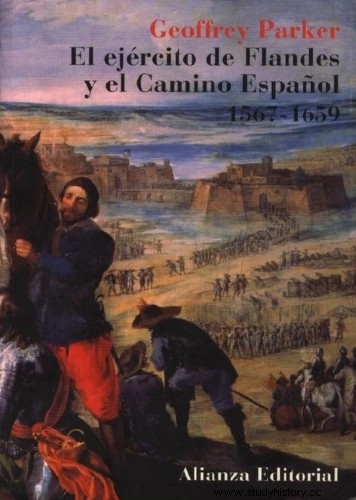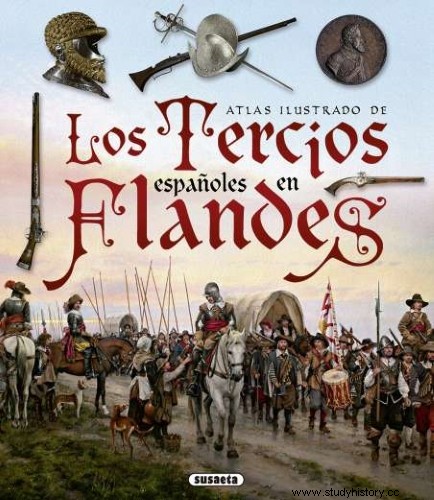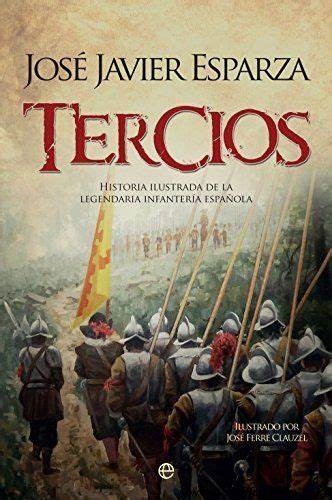
The 80-year war, which pitted Spain in the 16th century against the Netherlands, was the greatest challenge that the heirs of Emperor Charles V had to face. The difficulties were enormous, and the solutions that had to be sought were exceptional. The Spanish Way became a military corridor of nearly 1,000 km, which had to be prepared for the Spanish Tercios to arrive from Milan to Brussels.
The context of the war with the Netherlands.
We go back to the year 1566, at which time the problems in the Spanish Provinces of the Netherlands were finally breaking out. The governors imposed by Felipe II are not well received in Flanders and the prohibition of freedom of worship was not the best way to solve these disagreements either. The political tension moved to the streets, and Catholic churches began to burn, the background was religious, but the requests were of a different nature; the search for greater autonomy from the Spanish government.
The solution to counteract the revolts was inexorably sending military forces. That's where the problems start; On the one hand, recruitment in the area becomes complicated. On the other hand, maritime transport across the Atlantic, which could be a viable solution, is feared due to the control of the area by French and English rivals.
The solution is to send the Tercios from Spain and Italy. Therefore, the 3rd Duke of Alba, Fernando Álvarez de Toledo , decides to make a plan; the adequacy of a road linking Milan with Brussels, and through which at least 10,000 Tercios had to pass. Its design was not a reason for improvisation due to the needs of the moment, since since 1563 the path had been studied and traced by Antonio Perrenot de Granvela , trusted man of Carlos V, who remained in the cabinet of Felipe II in the first years of his reign.
Tracing the Spanish Way.
In that year 1563, Philip II thought of traveling to the domains of the Netherlands, and Cardinal Granvelle explained the path in question. The layout was approved by the king himself after verifying and making his men see that said road passed almost entirely through his own territories. Let's see what the main points of passage were:
- Genoa , which was reached by sea from Barcelona, was a Republic faithfully allied with Spain, its usual problems with France led it to ask the Spanish kings for help, they needed financing and the Genoese bankers offered them the best conditions.
- Duchy of Milan , the next destination was Spanish by virtue of the war with France. Since 1535 in the hands of Carlos V, but recognized in 1559 in the Treaty of Cateau-Cambrésis, where both countries signed a truce.
- Duchy of Savoy , after Milan it was hard to cross the Alps. The chosen territories belonged to said Duchy, once again the enmity with France became the defender of an ally for Spain. The Treaty of Groenendaal made this alliance effective in 1559.
- Franche-Comté , the situation of these territories was the most atypical politically speaking. The territories had been inherited by Carlos V, and the government belonged to the Spanish Netherlands. But its capital, Besançon, held the title of Free City, which is why the Duke of Alba skirted it on the first trip of the Tercios.
- Lorraine It is worth saying that few territories in Europe have been a pretext for wars like these. At that time in history, its status was independence, but fictitious, since France had the power of the cities of Lorraine. But by a pact signed in 1550, they were territories of free passage for the armies of any sign, with the only condition that they did not spend more than two nights in a row in the same place. These territories will be the reason for multiple changes of direction on the route, depending on the specific political moment they were going through.
- Duchy of Luxembourg , the last territory before entering the Netherlands belonged to the Spanish Crown from the inheritance of Carlos V.
- Free Bishopric of Liège , was the only stumbling block before the final destination of Brussels, despite not being Spanish territory, their problems with the Protestants brought them closer to the Spanish positions, hence the Tercios were normally well received.
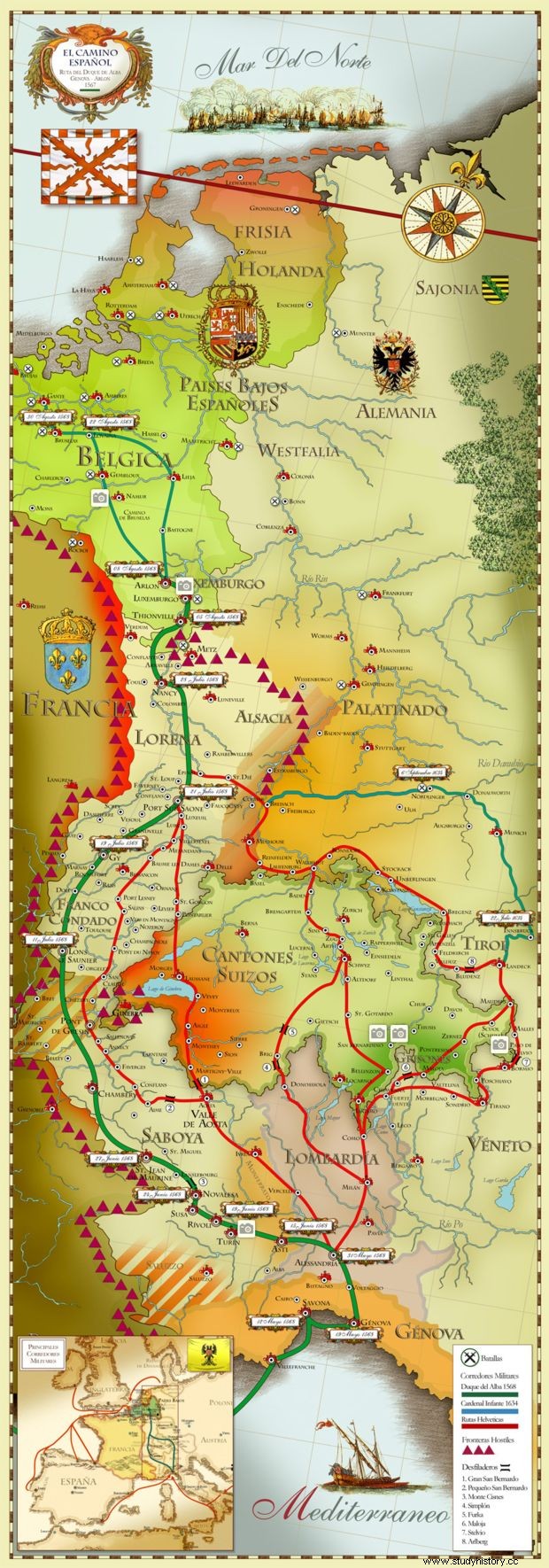
Map of the Spanish Way
Some characteristics of the Spanish Way.
It is very important to bear in mind that this path was used for 67 years, from the first trip commanded by the Duke of Alba in 1567, to the last It was carried out in 1634. That is to say, during such a long period, the road was evidently changed on numerous occasions, depending on multiple aspects, political, economic, or climatic. Up to six different routes have been counted, and each of them with variants, for example, to go from one city to another, the same valley was not always chosen.
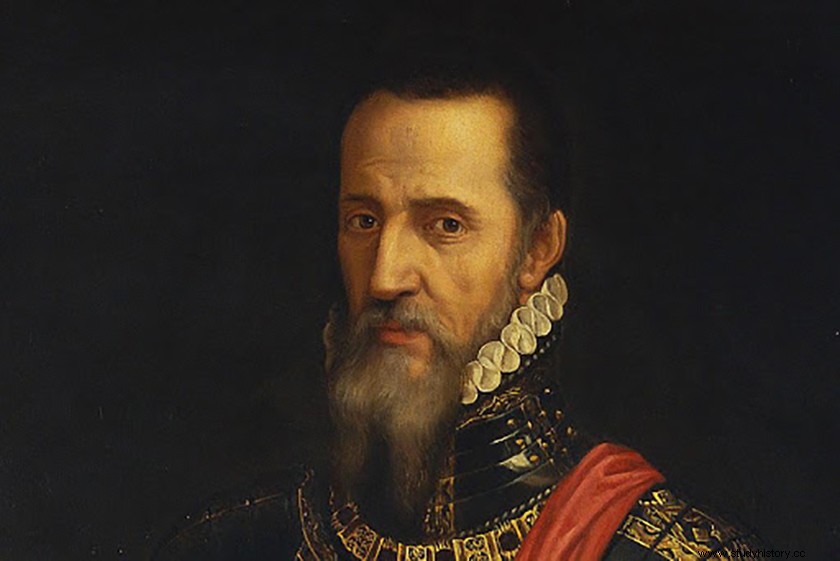
The III Duke of Alba
Diplomacy could not be forgotten.
Despite what was narrated above, the Tercios could not roam freely through the independent territories. From the first trip with the Duke of Alba, the Spanish diplomacy sent emissaries to the main cities to request the corresponding passage permit. Then the diplomatic agreements already had a more official character, since in certain periods in the most important cities of the route ambassadors were installed. The Thirds traveled with a safe-conduct, they were normally issued by the authorities without great inconvenience, due to the need to keep the Empire happy. Even so, it was important for the territories that the armies traveled with it. It should be noted that there were cases such as in 1577, in which a contingent of veteran Tercios returning to Italy had not requested the corresponding permission from the Duchy of Savoy, so they were held for several days at the border waiting for the safe-conduct.
A terrain of difficulties.
It is not difficult to imagine that the road that the Spanish Tercios found was far from being a motorway. These had to go through great gorges, ford enormous rivers with few bridges or enter thick forests along rudimentary paths exposed to ambushes. The passage through the Alps was the geographically most complicated section, the alpine passes are of considerable height and even in summer there was the danger of low temperatures and snowfall. The tunnels in this section were scarce, there is evidence of one built in 1480 by the Italians, for the collection of tariffs to the merchants of the two slopes, the Italian and the French. The tunnel in question, built at an altitude of 2,900m, was a semicircle with a diameter of 2.5m.
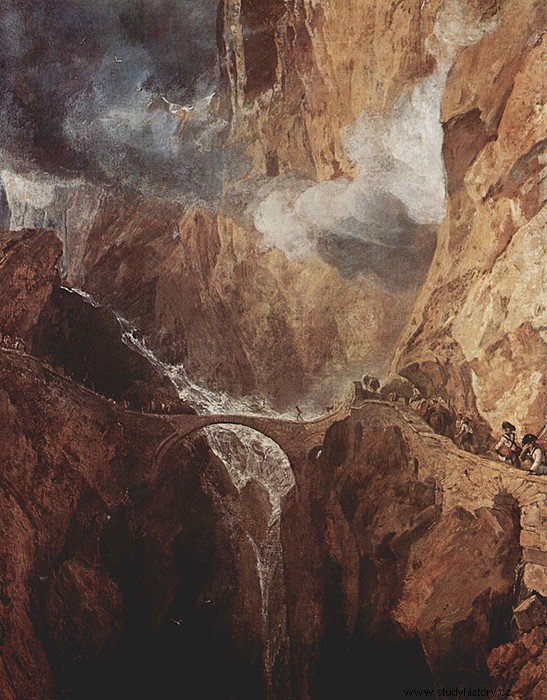
Oil painting of the Gotthard Pass between the Italian and Swiss Alps (1802)
It is true that some sections of the route were well prepared, but their use was constant, the ice, or the notable rains in these regions continually deteriorated them. To check their status and recognize the territory, the Tercios were preceded in their marches by crews, who were in charge of deciding the pertinent changes in the direction of the trip. Different autochthonous characters from the territories through which the Spanish Way ran used to join these crews, evidently they were the ones who best knew the area. Despite this, an attempt is made to strictly follow the route marked out before leaving Milan, since this was not chosen at random, but based on a rigorous prior approach and always accompanied by detailed maps.
A separate case was the passage through the great rivers on the other side of the Alps. In navigable rivers, the construction of bridges was not usual, due to the height that these had to have to allow the passage of boats and that made them notably more expensive. One of the solutions was the rental of boats in the towns along the route. But these apparently were not very cheap, presumably they took advantage of the need, which is why on some occasions it was cheaper to build a bridge. There is evidence of the 70 guilders that were paid in 1582 for the construction of a bridge over the Saône River, possibly the day after the passage of the Tercios was demolished for the passage of merchant ships.
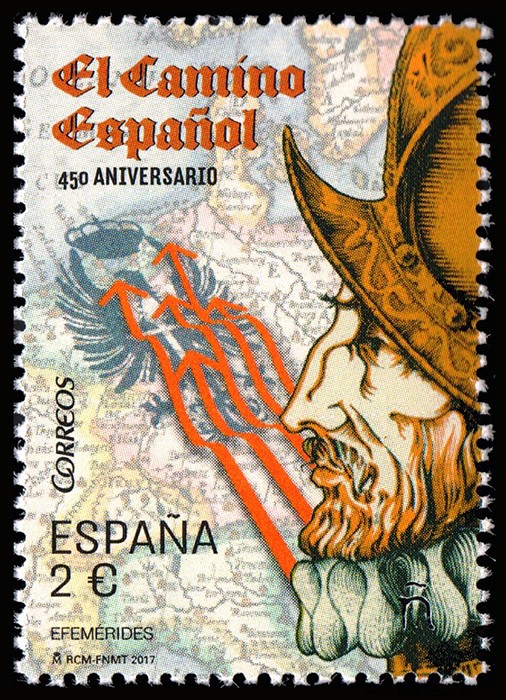
Commemorative stamp of the 450th anniversary of El Camino Español
Accommodation and maintenance of the Tercios.
A few quick figures to put us in situation:The first expedition led by the Duke of Alba consisted of 8,646 troops on foot and 965 on horseback, not counting the officers. Well, the requests prior to the passage of the contingent were to feed 16,000 mouths and 3,000 horses, that during each of the 57 days that the journey lasted. To balance the numbers, we must point out that the family traveled with the Tercios, that is, the wife and children, we must think that the married Tercio must have already been good enough to hire him with all the expense that he entailed.

Image that recreates the Spanish Way
For board and lodging, the system of “étapes was established in the 16th century ”, its name comes from the French, since they were the first to use this system militarily, which was inherited from the one used by merchants during the Middle Ages. They were a kind of warehouses where essential products were stored, the armies in their path bought the products they needed. But for the armies of the Modern Age, such as the Tercios, this system soon became scarce. Hence, those in charge of these “étapes ”, so to speak, they diversified the business. They were in charge of receiving requests for passage, and of lodging the members of the Tercios in the houses of the surrounding municipalities, who also had to be fed by these owners. After leaving the Tercios, the owners of these makeshift shelters passed through the “étape ” corresponding, to charge for their services.
The system evidently had its “loopholes”. Many times those who got a bed and a hot plate were the officers, so the rest had to be sought, so to speak, "life". We cannot exclude the Thirds from the outrages that modern armies carried out, in a time of history plagued by wars. Everything was aggravated in times of crisis or drought, there was no choice but to reach the towns and camp by force, using abandoned houses or those that were inhabited were forced to give up their beds, and even the little plate of food they had for that day. The wars of the Modern Age, and this was no exception, were plagued by crimes, rapes and murders.
The Spanish Way today.
I don't want to keep the bad taste in my mouth from the previous paragraph. History has been cruel and wars are the cruelest thing that human beings have invented, we cannot blame anything for it, neither flags nor territories.
Fortunately and over time it seems that we have learned something, at least in Western Europe, the great powers such as England, France, Germany, Italy or Spain try to sail in the same European ship Well, the English have decided to sail alone. The rest “still” can circulate freely in all these countries and the Camino Español route is more valid than ever. Today there are different associations that promote this route, it can be done on foot, by bicycle, or by car, allow me personally to stay with the latter and recommend in images some of the cities that can be enjoyed on this path.
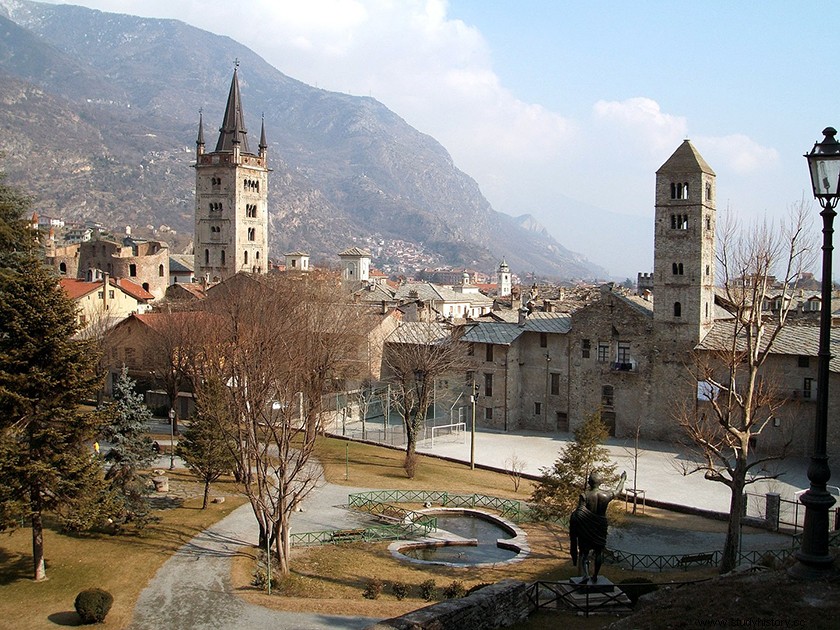
Susa (Duchy of Milan)
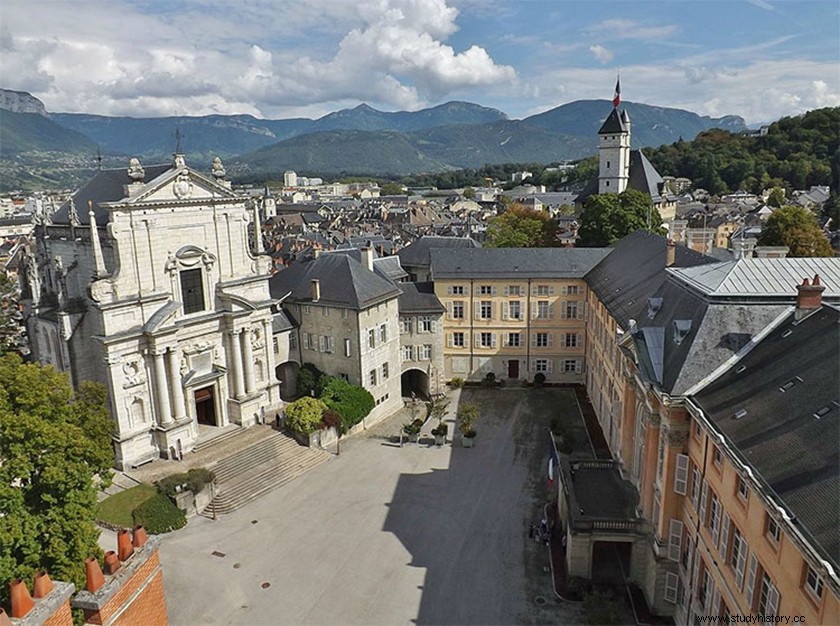
Chambery (Duchy of Savoy)

Besançon (Franche-Comté)
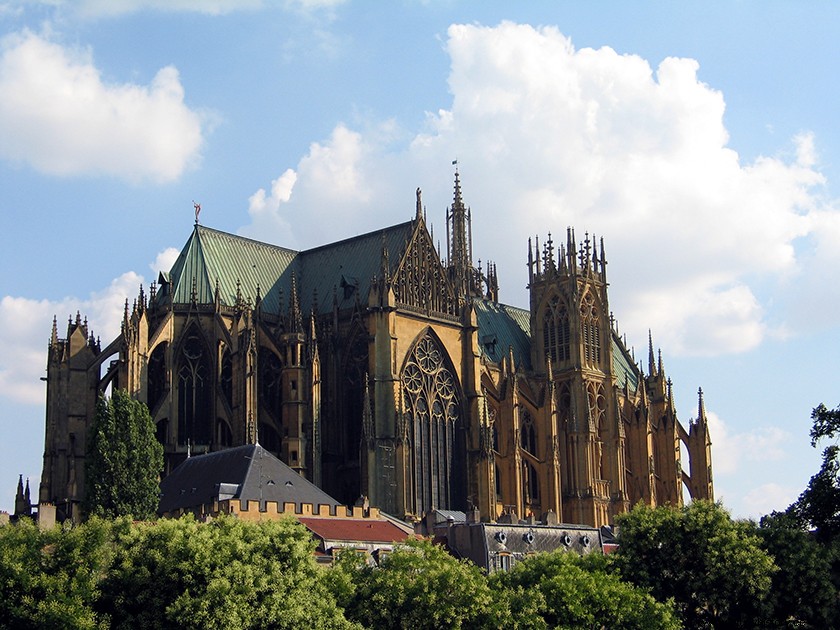
Metz Cathedral (Lorraine)
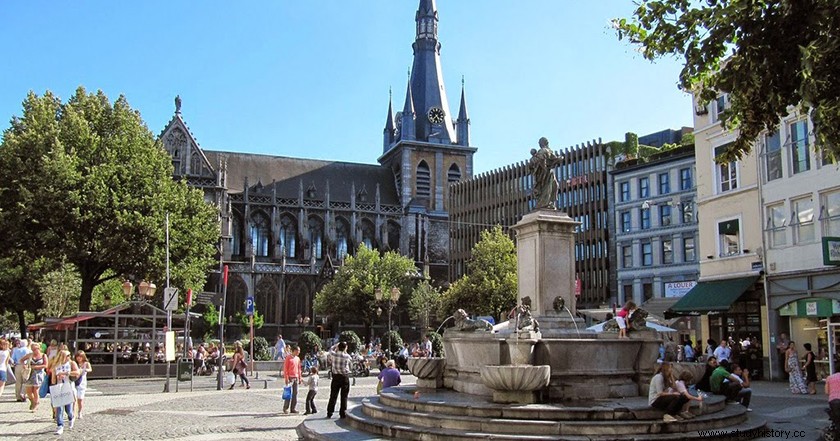
St Paul's Cathedral (Liège)

Leuven (Spanish Netherlands) last big city before reaching Bruxelas.
Recommended reading:
More info:
The Army of Flanders and the Spanish Road (1567-1659), Geoffrey Parker
The Modern Age (15th-18th centuries), Luis Ribot, Ed. Marcial Pons, 2016

